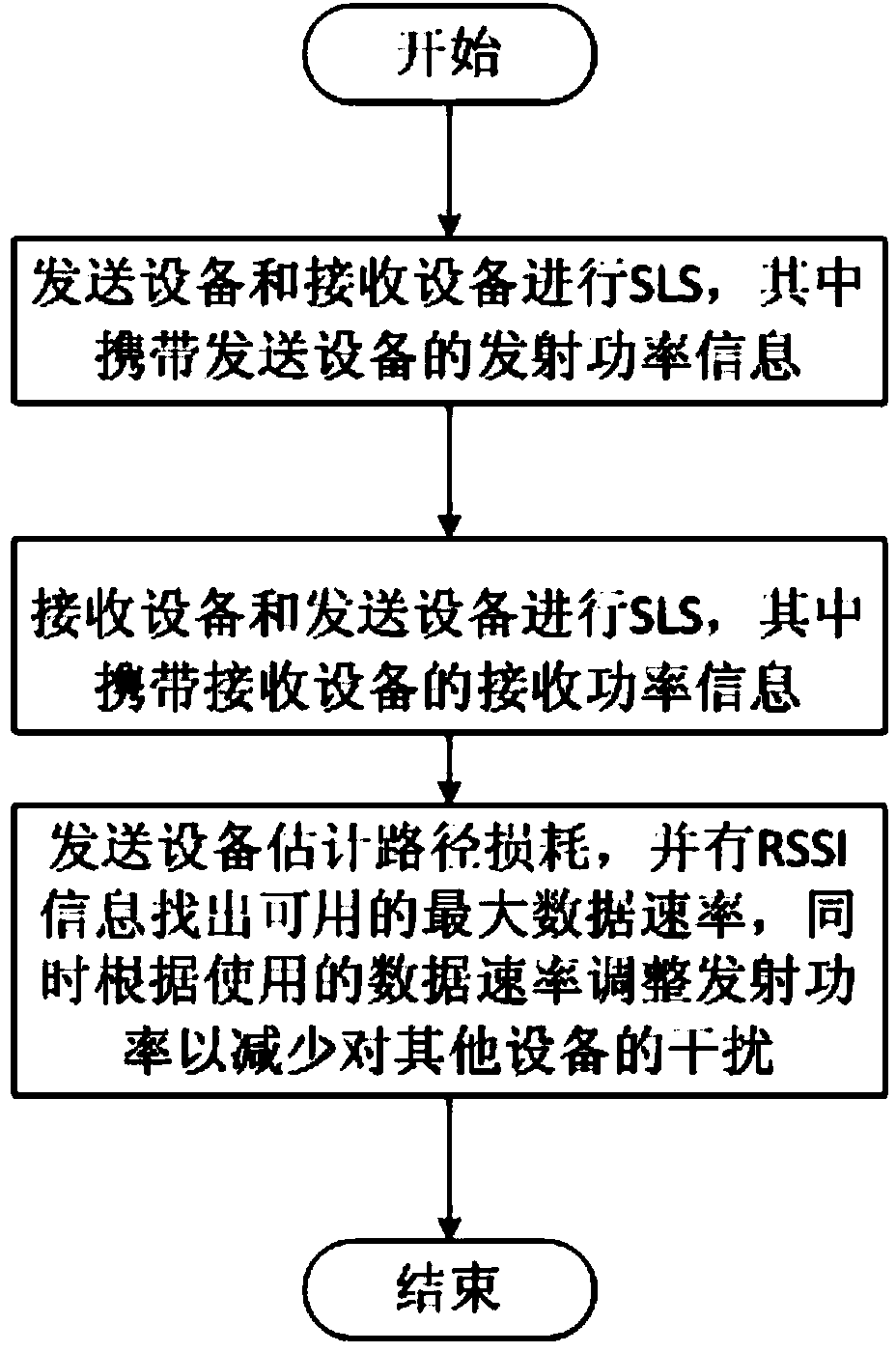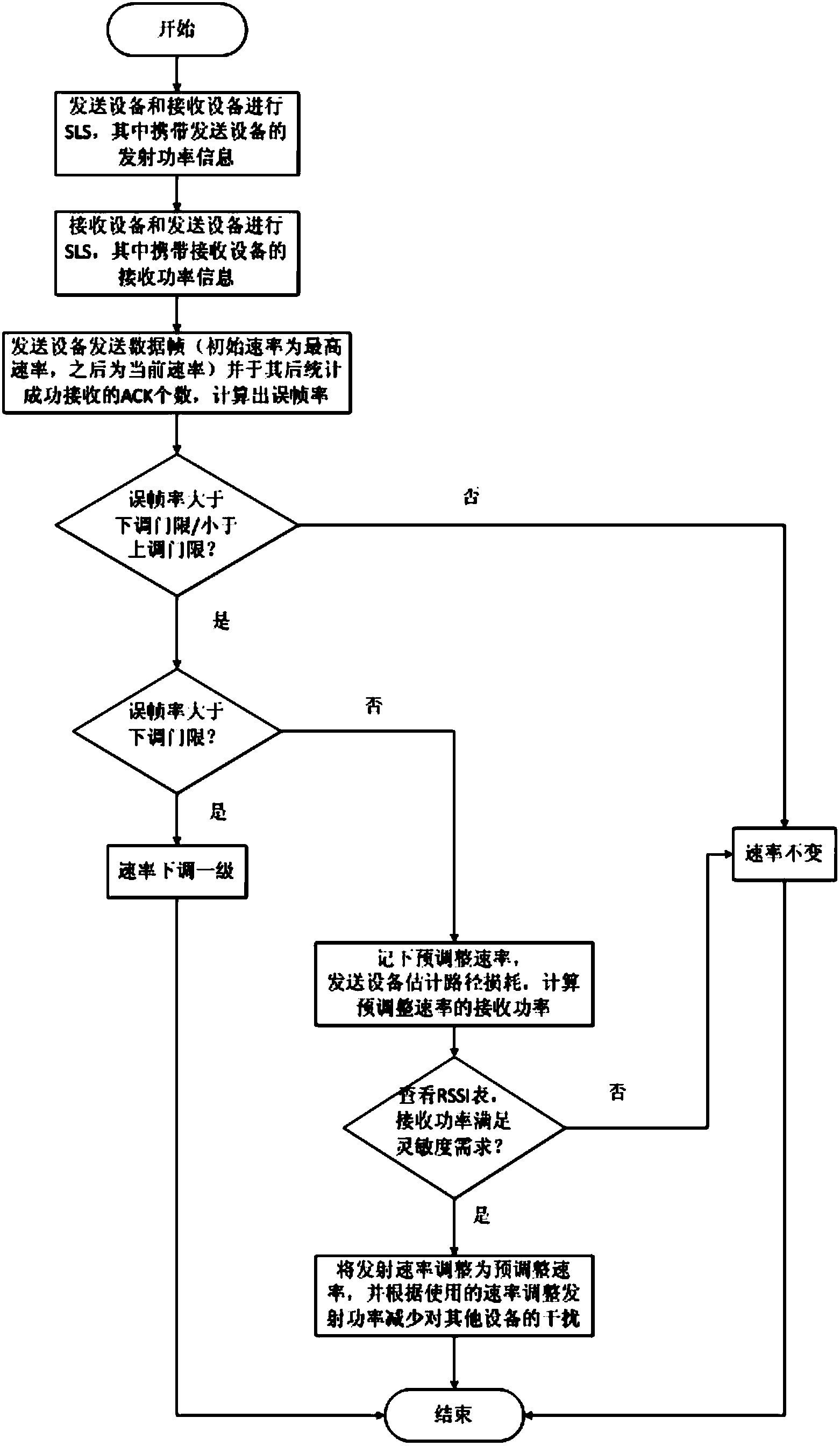Rate-self adaptive method under spatial multiplexing in millimeter wave high speed communication
A rate-adaptive, high-speed communication technology, applied in wireless communication, power management, electrical components, etc., can solve problems such as not having strong reliability, achieve the effect of overcoming repetition rate jitter, increasing multiplexing power, and reducing interference
- Summary
- Abstract
- Description
- Claims
- Application Information
AI Technical Summary
Benefits of technology
Problems solved by technology
Method used
Image
Examples
Embodiment Construction
[0070] The present invention will be further described below in conjunction with the accompanying drawings.
[0071] Such as image 3 Shown is a rate adaptive method under spatial multiplexing in millimeter-wave high-speed communication, which combines statistics-based and dynamic link quality metrics to select an appropriate transmission rate; by counting Blk-ACK (block acknowledgment) frames Calculate the short-term frame error rate based on the number of ACKs successfully received and compare it with the preset threshold to determine whether the rate can be adjusted. Combine the RSSI information and the available MCS to determine whether the rate can be adjusted, and then adjust the transmission after selecting the appropriate rate. Power to further improve throughput; specifically include the following steps:
[0072] (1) The sending device and the receiving device perform SLS, request the received signal strength information from the receiving device, and carry the trans...
PUM
 Login to View More
Login to View More Abstract
Description
Claims
Application Information
 Login to View More
Login to View More - R&D
- Intellectual Property
- Life Sciences
- Materials
- Tech Scout
- Unparalleled Data Quality
- Higher Quality Content
- 60% Fewer Hallucinations
Browse by: Latest US Patents, China's latest patents, Technical Efficacy Thesaurus, Application Domain, Technology Topic, Popular Technical Reports.
© 2025 PatSnap. All rights reserved.Legal|Privacy policy|Modern Slavery Act Transparency Statement|Sitemap|About US| Contact US: help@patsnap.com



